This exploration is for all ages, as the colored smilies show. Map the ocean floor, identifying the major mountain ranges and rifts, make an ocean-in-a-bottle craft, and then round it out with an ocean lapbook. You can learn about oceans with your whole family together!
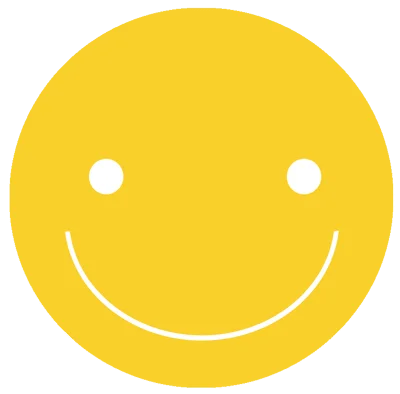
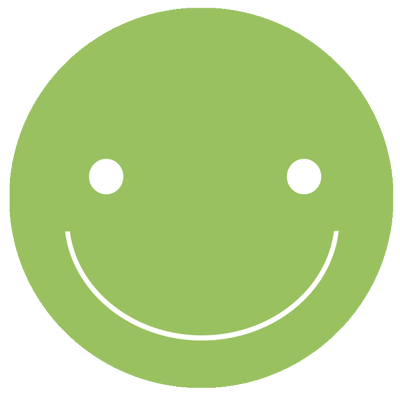
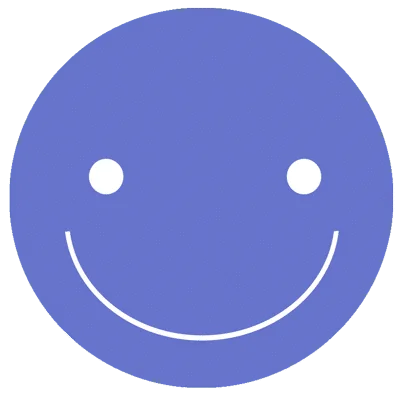
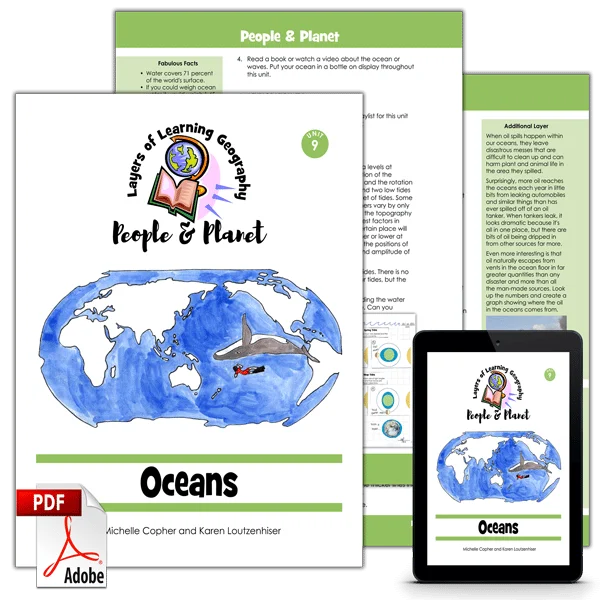
These ocean explorations are from the Oceans unit. Layers of Learning has hands-on experiments in every unit of this family-friendly curriculum. Learn more about Layers of Learning.
Oceans cover three quarters of the surface of the earth and though they’ve been used heavily for trade and food sources since ancient times it is only recently that humans have begun to explore the ocean floor, life in the ocean, and how the currents across the whole globe affect weather, ocean life, coastlines, and shipping lanes.
People are still exploring the oceans today and discovering new life, new land forms, and new ideas.
Step 1: Library Research
Before you begin exploring, read a book or two about oceans. Here are some suggestions, but if you can’t find these, look for books at your library about oceans, ocean floor, ocean currents, and ocean life. The colored smilies above each book tell you what age level they’re recommended for.
As Amazon affiliates, the recommended books and products below kick back a tiny percentage of your purchase to us. It doesn’t affect your cost and it helps us run our website. We thank you!

The Magic School Bus on the Ocean Floor
by Joanna Cole
Step 2: Ocean Explorations
Layers of Learning units come with many explorations that you choose between. You do not need to pick all of the printables and activities below, just the ones that most appeal to you.
Exploration: Ocean Floor Map
The ocean floor is covered with mountains, valleys, plains, and other features similar to the land surfaces of earth. The ocean’s features, like land features, are a result of tectonic processes from deep inside the earth.
Here is an Ocean Floor Map. It shows some of the major mountain ranges and trenches that can be found under the sea. You can add more details that you discover from books, websites, and videos you watch.
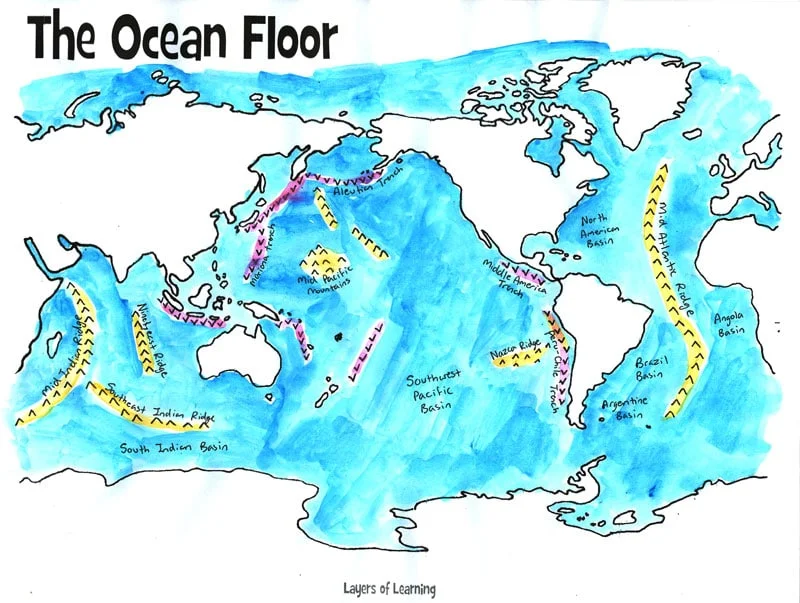
Exploration: Ocean-In-A-Bottle
This is a fun project to introduce a unit about oceans or to finish one off. You might also use it when you’re learning about waves or currents.
You’ll need:
- An empty 2 liter plastic bottle with a lid
- Clear vegetable oil or mineral oil
- Water
- A funnel
- Blue food coloring
- First, fill the bottle halfway with water. Add a few drops of blue food coloring and swirl it around until it mixes.
- Using a funnel, add oil up to the top of the bottle. Put the lid on tightly. You may want to put a little hot glue around the rim if you’re worried about it leaking.
- Now rock the bottle on its side gently to create a wave that goes back and forth.
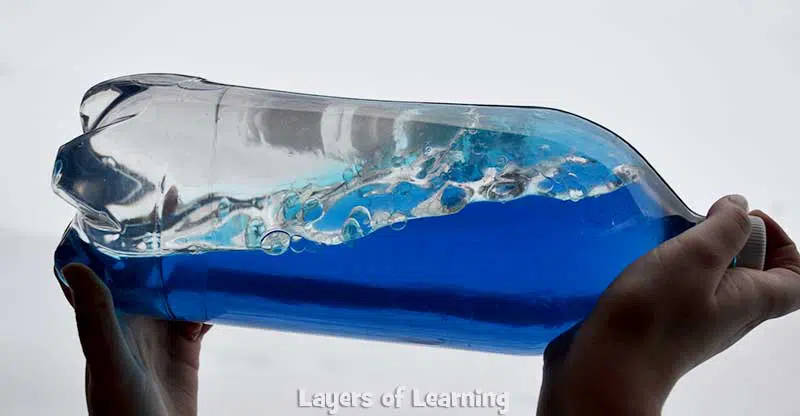
If you want to, you may add small shells, sand, or tiny fish-shaped beads before sealing the bottle.
Step 3: Show What You Know
During this unit you can make an ocean lapbook that shows what you have learned. Let each child show off their lapbook on the final day of learning about oceans and give them big applause!
For this activity you need file folders or stiff card stock, which you can tape together, and the ocean lapbook printables.
Each lapbook is made of a single file folder. We refolded the folder so it has a cover with a center opening, one flap on the left and one on the right. If you used two sheets of card stock, taped up the middle, you could make the same folds.
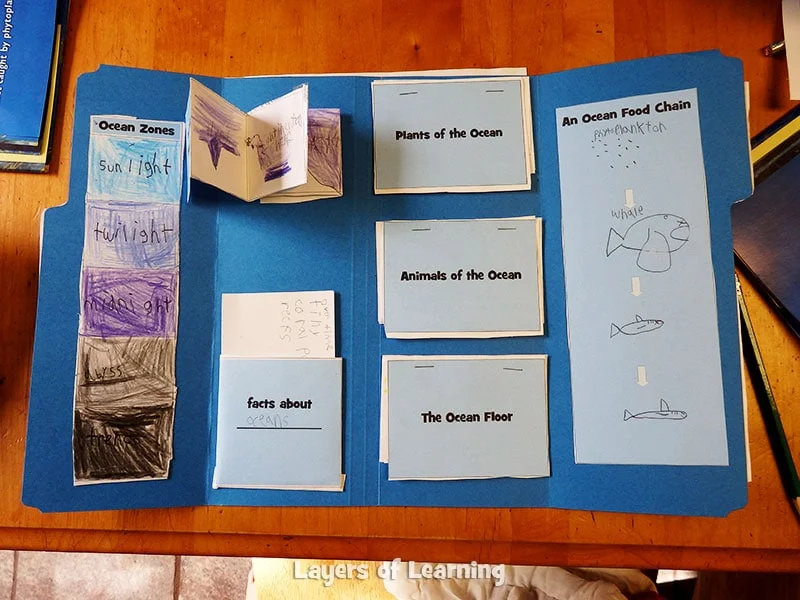
We spent several weeks on this lapbook, making one bit at a time as we learned about oceans. For example, we watched a YouTube clip about the ocean zones and then labeled and colored in the ocean zones paper strip and glued it into the lapbook along one side. On another day we read several books from the library about the ocean and ocean animals and made index cards about ocean facts. We put the ocean fact cards in a pocket that is glued to the lapbook.
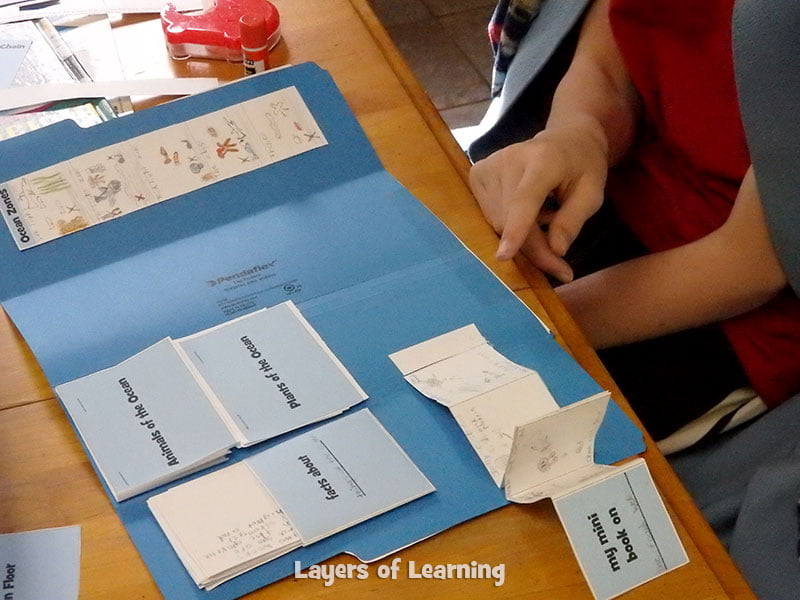
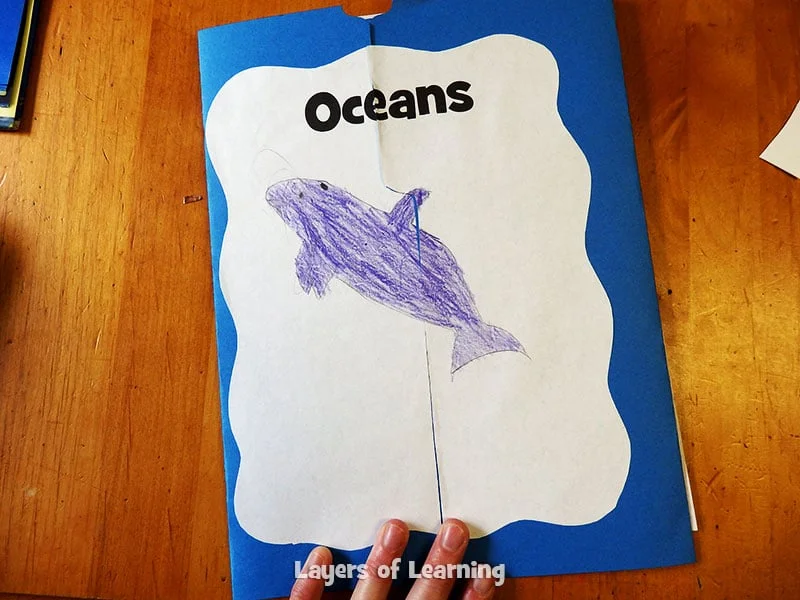
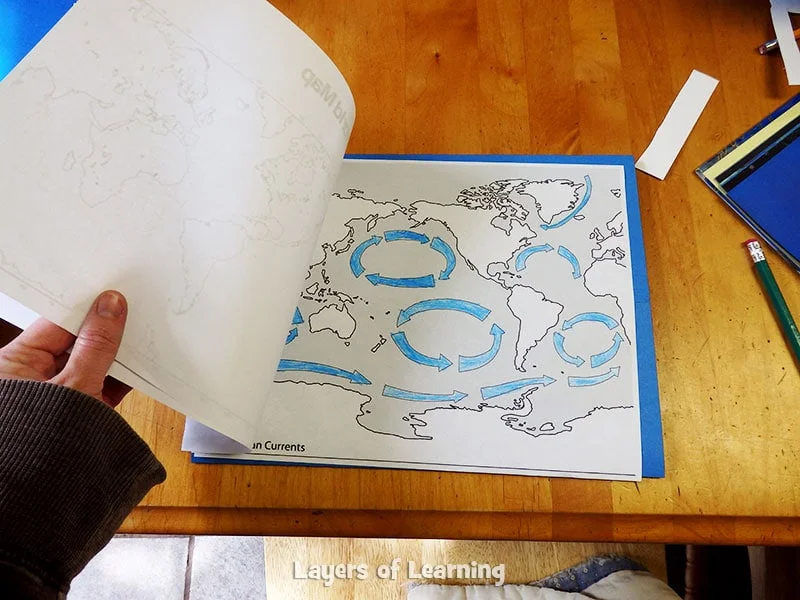
Additional Layers
Additional Layers are extra activities you can do or tangents you can take off on. You will find them in the sidebars of each Layers of Learning unit. They are optional, so just choose what interests you.
Writer’s Notebook

Create your own “undiscovered” marine animal. Where does it live? What features does it have to help it survive in its environment (most really deep sea fish don’t have eyes because it’s too dark to see anyway). What does it eat? Name it, draw a picture, write a story, and describe what it’s like.
Additional Layer

Focus on learning a lot about one particular ocean animal. Learning about one thing in detail can help you understand other animals, hone research skills, and heighten interest as you discover fascinating things about the world.
Expedition
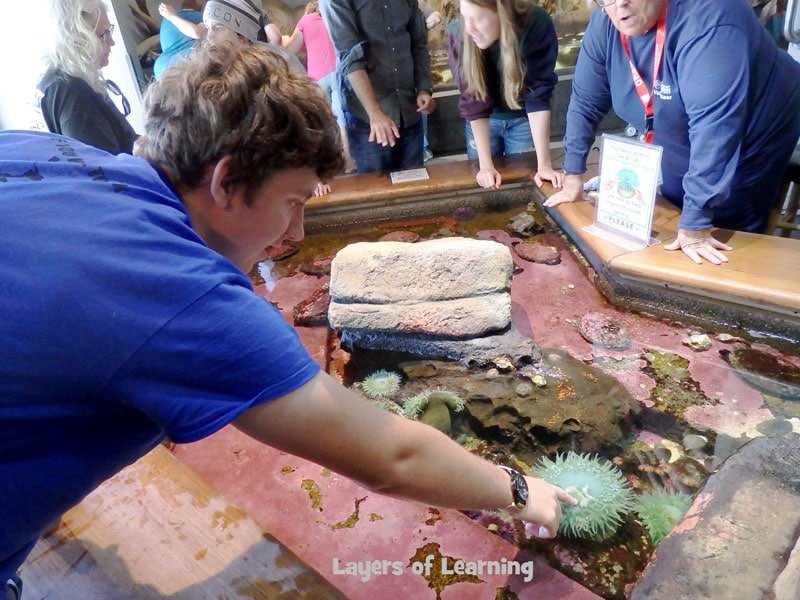
Take a trip to the seashore or to an aquarium during this unit to see the ocean up close.
Get a Free Unit
Choose between the first unit in each Layers of Learning subject to try for free when you sign up for the newsletter.
We never spam and you can cancel your subscription at any time.


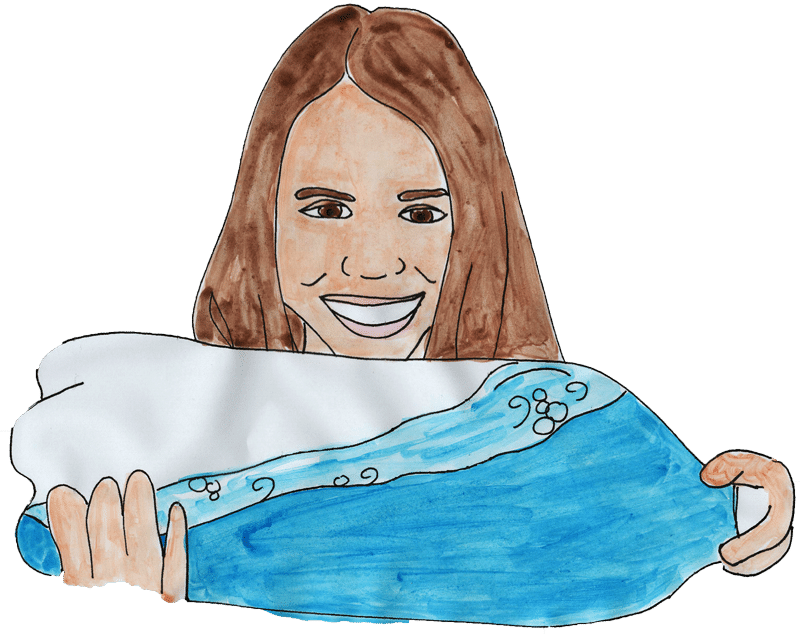


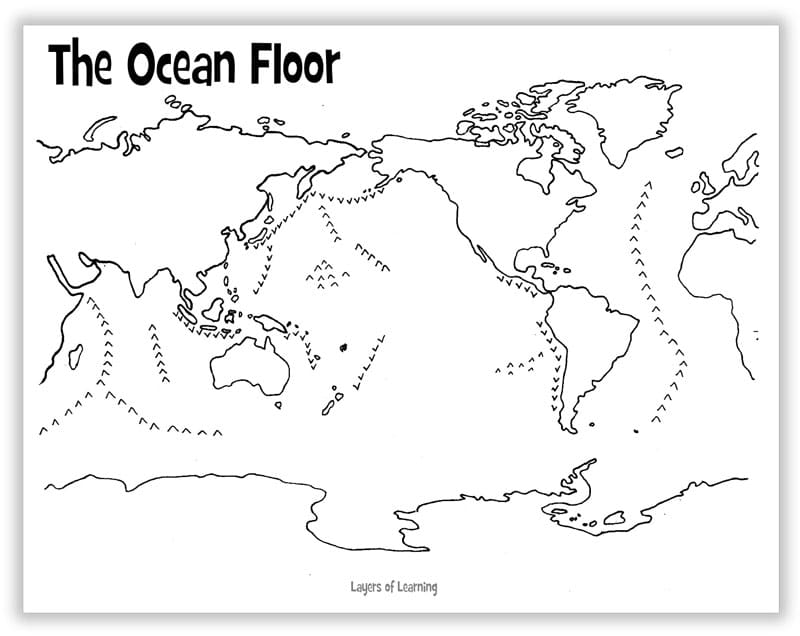






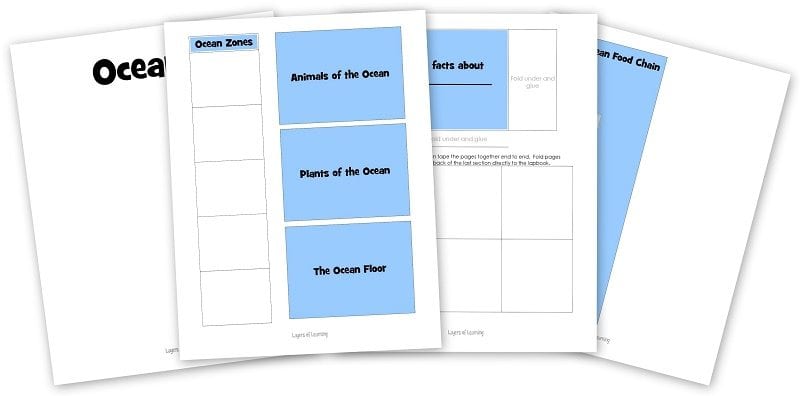
I loved it it gave me answes on my test
Wonderful materials. Thank you for sharing!!! It’s just what I needed.
this was awesome thank u so much for making this site
Cyndy,
Thanks for the heads up. We’ve fixed it.